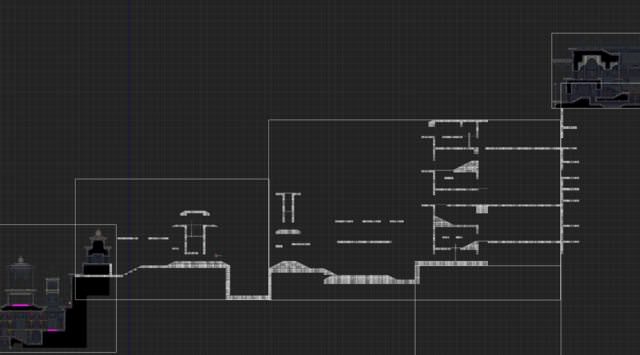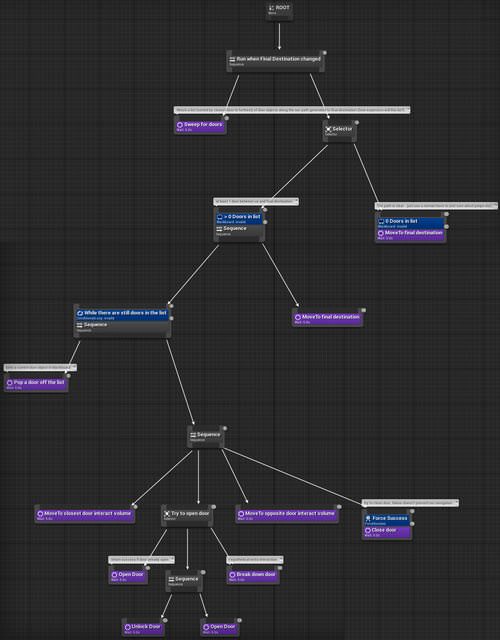We've been focusing back on full-time development following Develop and Radius, as well as working on a few TOP SECRET things that will be shared when the time is right.
Our designer Chris is currently split between two tasks - AI improvements that improve our stealth gameplay, and fleshing out the outer edges of the world map.
World Map

We've been working on making rooftop sections at the very top of the map. This is an area we're sure will get lots of iteration, because we’d like a player who’s really mastered the moveset to be able to get across here in one fluid motion.
To start with, Chris is just blocking out the space, seeing what feels right, and how to sensibly manage the height change between the two neighbouring sections. Currently it feels pretty good to climb the towers internally, but not so good from the outside. We'll be focusing on breaking the outline up a little and trying to add some more interest as you travel between them.
While doing this, we've also started adding to the wishlist of future player controller improvements. Things like being able to interrupt some animations, and some ‘feel good’ things like caching of jump inputs, and allowing a little tolerance when making jumps off ledges.
We've also started to prototype some of the movement features that’ll be unlocked during the course of the game, but we’ll save that for another update
AI
Meanwhile, over in AI town we've been trying to work out the best way to approach doors.
The current implementation uses nav link proxies, and actually works surprisingly well - kudos to one of our coders, Rex, for digging into these because Chris was having difficulty understanding how to make them do anything useful!
However, we're trying to take a pretty tough stance, that as much decision making as possible for the AI should happen as behaviours within the behaviour tree. Currently, the use of nav link proxies breaks this rule pretty fundamentally. From the behaviour tree perspective, the AI just uses ‘move to’ and either reaches it’s final destination, using doors along the way, or doesn’t make it.
We're pushing for a solution that lets us setup lots of fall backs in the tree to allow for things like unlocking doors, breaking doors, and anything interesting we might come up with in the future. We've been heavily inspired by the examples given in this Gamasutra article.
To that end, we’ve mocked up our own version using placeholder nodes in a behaviour tree:

Well, that’s all for now, we’ll provide another update when some of these things are implemented. Fingers crossed it works as well as it does in our heads!




